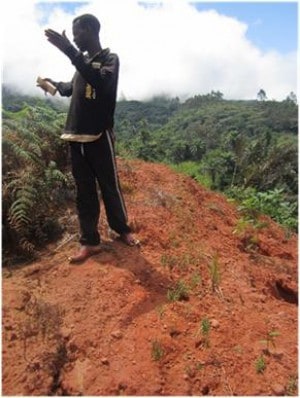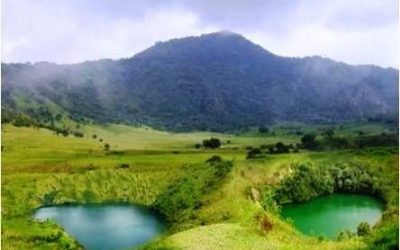
By Payong Marquise
Based in Bakassa in the West Region, Nitcheu Jean Baptiste began to test different ways of making his life much better and it is from here that since 2010 he began to produce liquid fertilizer.
Nitcheu, who has been working with Trees For The Future/Trees Cameroon since 2007 and has planted over 1 million agroforestry trees, says he has realized a tremendous increase in his soil fertility and thus greater output from the farm. Inspired by these outcomes from practicing agroforestry, Nitcheu started making liquid fertilizer organic substances, which contain three basic plant food elements – nitrogen, phosphorus and potassium.
To get about 30 to 35 litres of liquid fertilizer, Nitcheu blends scraps from meal preparations and adds the fluid to 20 litres of water in 30 or 40-litre container. He adds water used to cook vegetables, and then tops the mixture with 2 to 5 litres of rabbit. The leaves of Acacia, Calliandra and Leucaena follow, either fresh or ground, and two teaspoons of kitchen salt. The container is then sealed or covered and left to set at room temperature. It is ready for use after about two weeks.
“Liquid fertilizer requires no money to produce,” says Jean Baptiste. “It can be easily stored and transported, applied to plants by watering or spraying thereby reducing watering. It doesn’t require the labour of mixing it into the soil.”
Nitcheu says besides urine, the rabbit produces general manure – one of the best manures for farms.
“It increases yields from poor soil by improving soil structure and also improves the life cycle of the beneficial microorganisms in the soil. It is rich in many nutrients and very simple to use. Rabbits are, therefore, an excellent source of manure,” says Nitcheu.
This fact of rabbit producing one of the best manure can be approve by Youmsi Justin, the technician of Moungo Division in the Littoral Region, corroborates.
In his animal farm in Poola, Nkongsamba, Youmsi raises rabbits when he gets the precious waste after cleaning the rabbit’s pen.
“The waste is a very good fertilizer for our farms and contains all the macro and micro nutrients,” says Youmsi.



